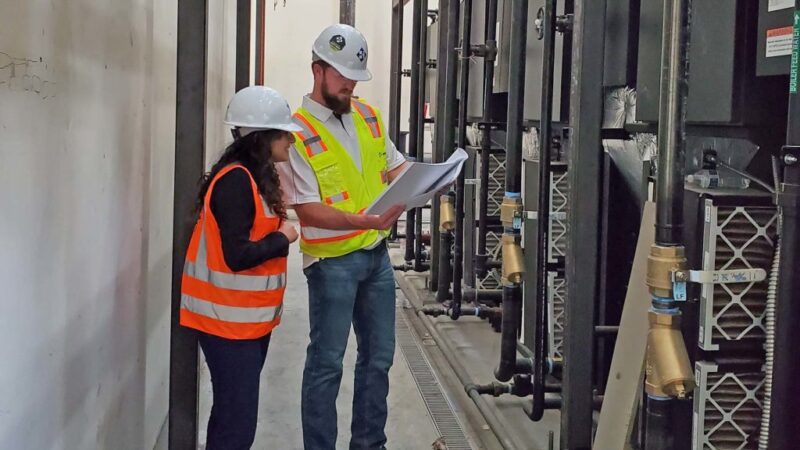The world of building design is a complex tapestry woven from myriad elements of safety, compliance, and innovation. As architects and engineers grapple with the evolving landscape of regulations and technology, they face a monumental challenge: creating structures that are not only visually stunning but also rigorously safe and compliant.
In this pursuit, the integration of engineering insights has become paramount. From understanding the nuances of material strength to navigating the intricate web of local building codes, each decision can have profound implications.
This article delves into the essential considerations and cutting-edge strategies that can empower design professionals, illuminating a path toward buildings that stand the test of time while prioritizing the welfare of all who inhabit them. Join us as we explore the fascinating intersection of engineering rigor and creative design, where safety and aesthetics harmoniously coexist.
Key Regulatory Frameworks in Building Design

Building design is intrinsically linked to a myriad of regulatory frameworks that establish the standards for safety, accessibility, and sustainability. At the forefront of these are the International Building Code (IBC) and local zoning laws, which codify essential requirements for structural integrity and occupancy. Beyond these foundational guidelines, several specialized regulations—such as fire codes, seismic design standards, and energy efficiency mandates—further shape the architectural landscape.
Each jurisdiction may implement its own adaptations of these rules, accounting for local climatic, cultural, and ecological factors. Consequently, designers must navigate a complex web of legal stipulations and industry best practices, fostering an environment that not only meets compliance but also encourages innovative solutions to emergent challenges.
Understanding this intricate regulatory ecosystem is crucial for architects and engineers, as it lays the groundwork for creating spaces that are not just compliant, but also conducive to the well-being of their occupants and the environment.
Risk Assessment and Mitigation Strategies

In the realm of building design, risk assessment and mitigation strategies form the backbone of safety and compliance. An effective risk assessment begins with a thorough identification of potential hazards—structural, environmental, and human—that could jeopardize the integrity of the design.
This involves a meticulous examination of materials, codes, and site conditions, combined with advanced modeling techniques to simulate various scenarios. Once potential risks are identified, engineers can deploy a variety of mitigation strategies tailored to address the specific vulnerabilities of a project.
These may include reinforcing structural elements, implementing redundancy in critical systems, and utilizing innovative materials that enhance safety profiles. Moreover, the incorporation of adaptive response mechanisms—such as early warning systems and flexible design principles—ensures that buildings not only meet current regulatory standards but also evolve to confront future challenges.
In this dynamic landscape, ongoing collaboration among stakeholders is vital; it fosters a culture of safety and ensures that all voices are heard in the pursuit of resilient and compliant structures. Balancing creativity and rigor, these strategies ultimately pave the way for architectural innovations that prioritize human wellbeing and environmental stewardship.
Material Selection and Structural Integrity

The choice of materials in building design is a pivotal aspect that directly influences structural integrity and safety. Engineers must navigate the intricate interplay between material properties—such as tensile strength, durability, and resistance to environmental factors—and the specific demands of the project at hand.
For instance, selecting steel over wood might be advantageous for high-rise structures due to its superior load-bearing capabilities, yet it poses additional challenges, such as susceptibility to corrosion. Conversely, while concrete provides excellent compressive strength, its inherent brittleness requires careful consideration in seismic-prone areas.
Each decision cascades into a set of ramifications; thus, a holistic approach—a melding of innovation and traditional practices—becomes essential. By implementing advanced materials and coupling them with time-tested engineering principles, designers can forge buildings that not only comply with regulations but also stand resilient against the tests of time and nature.
Conclusion
In conclusion, the intersection of engineering principles and building design is crucial in ensuring safety and compliance in our constructed environments. By integrating insights from various engineering disciplines, including the specialized knowledge of a fire engineer, we can create structures that not only meet regulatory standards but also prioritize the well-being of their occupants. As we continue to advance in technology and methodologies, it is imperative that we remain vigilant in our commitment to innovative design practices that address safety concerns and elevate the overall quality of our built environment.
Emphasizing collaboration among engineers, architects, and regulatory bodies will pave the way for a future where safe and compliant buildings are the norm, fostering healthier and more secure communities.


